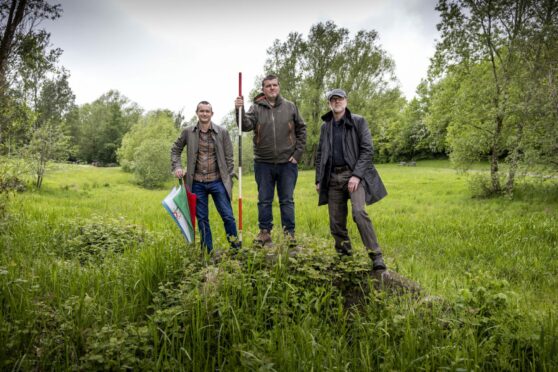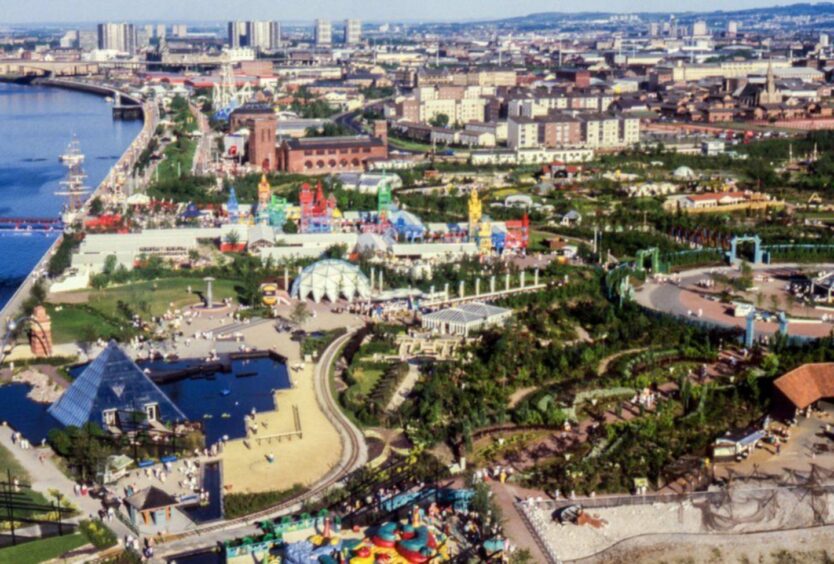
It was a seedbed of growth, a festival of colour, culture and optimism drawing millions to the Clyde as Scotland’s largest city bloomed at the end of a decade of decline.
Now, 34 years on, a group of historians are digging up the past to rediscover the Glasgow Garden Festival.
A team of archaeologists is beginning an excavation in the only remaining part of the 120-acre site in search of touchstones evoking memories of the six-month festival that ran between spring and autumn in 1988.
Festival Park, on the outskirts of Govan, was the only part of the festival to be retained for the people of the city when the site was bulldozed. This week, a dig will begin around the site as the search for memories begins.
Dubbed Digging The Festival, the move was sparked by an online search into the whereabouts of the event’s hundreds of art installations.
Dr Kenny Brophy, head of archaeology at Glasgow University, said: “We don’t really know anything about what’s been left. The process of demolishing the site wasn’t documented so nobody really knows what’s there. We’ll focus on some water features still in the park, such as the waterfall, the stream and lochan.
“It’s completely speculative. I’m hoping we can find those magical nuggets that give us that connection to someone who was at the festival in 1988.”
Explorations will also look for trenches and foundations of Garden Festival structures buried beneath the site.
The dig, in conjunction with Glasgow City Heritage Trust, is part of a wider social history project seeking to trace and catalogue more than 270 items featured in the festival, from public art and temporary buildings to rollercoasters and trams.
It was sparked, in part, by a blog Brophy wrote about the discovery of Richard Groom’s Floating Head sculpture, rusting in a scrapyard in Erskine, Renfrewshire.
A website, glasgowgardenfestival.org, has been launched to document the known location of items like the Coca Cola Roller and the Clydesdale Bank Tower. It also contains a catalogue of other items the team hope the public can help them trace and record.
Designer Lex Lamb, from Greenock, is one of the figures behind the drive to reclaim the past. He said: “Possibly because the 1980s aren’t particularly fashionable, it wasn’t formally recorded. A lot of it will pass out of living memory, so there’s a sense of urgency.
“The hope is to build a permanent record of something that was unrecorded.”
Has anyone seen a giant teacup?
Some of the festival’s attractions have already been mapped. The festival train is at a resort, in Hokkaido, Japan; the tower is on Rhyl seafront in Wales; while the rollercoaster is still thrilling fans at Pleasurewood Hills, in Lowestoft.
Sculptor George Wyllie’s Motherwell Tree is in Motherwell shopping precinct, a piece by Stan Bonnar, Man With a Fish On His Head, is at Seafield, Belhaven, and Malcolm Robertson’s Giant Irises are in Glenrothes. The Forestry Commission’s wooden sculpture called Old Forester saw out his last days atop a mountain in the Lake District.
Lex Lamb points to the “emotional capital” invested in the festival, intensified by the impermanent nature of its time on the banks of the river.
“The festival made a hell of a difference to the city’s civic confidence,” he said. “But with every year that knowledge vanishes because objects are lost. I’d also like to know what happened to the floating tap, which was outside a garden centre in Cumbernauld for years, but has since disappeared without a trace.”
glasgowgardenfestival.org or follow the initiative on Twitter and Facebook

Enjoy the convenience of having The Sunday Post delivered as a digital ePaper straight to your smartphone, tablet or computer.
Subscribe for only £5.49 a month and enjoy all the benefits of the printed paper as a digital replica.
Subscribe

